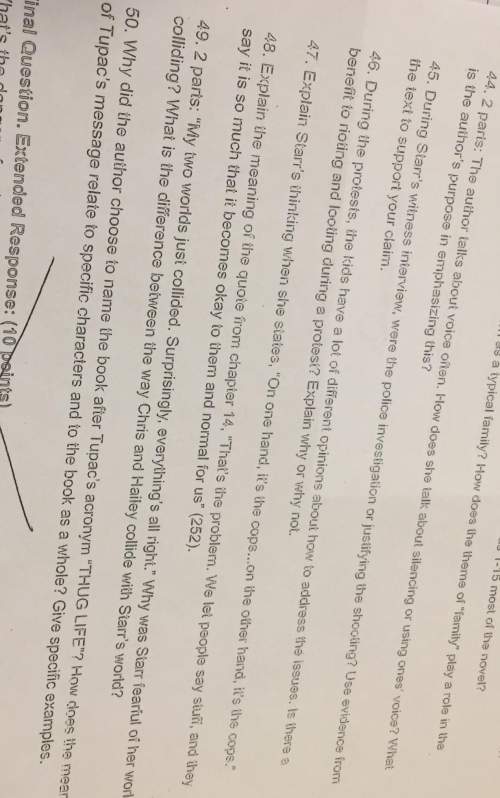Still I Rise
You may write me down in history
With your bitter, twisted lies,
You may t...

Still I Rise
You may write me down in history
With your bitter, twisted lies,
You may trod me in the very dirt
But still, like dust, I'll rise.
Does my sassiness upset you?
Why are you beset with gloom?
'Cause I walk like I've got oil wells
Pumping in my living room.
Just like moons and like suns,
With the certainty of tides,
Just like hopes springing high,
Still I'll rise.
Did you want to see me broken?
Bowed head and lowered eyes?
Shoulders falling down like teardrops,
Weakened by my soulful cries?
Does my haughtiness offend you?
Don't you take it awful hard
'Cause I laugh like I've got gold mines
Diggin' in my own backyard.
You may shoot me with your words,
You may cut me with your eyes,
You may kill me with your hatefulness,
But still, like air, I'll rise.
.
.
.
Out of the huts of history's shame
I rise
Up from a past that's rooted in pain
I rise
I'm a black ocean, leaping and wide,
Welling and swelling I bear in the tide.
Leaving behind nights of terror and fear
I rise
Into a daybreak that's wondrously clear
I rise
Bringing the gifts that my ancestors gave,
I am the dream and the hope of the slave.
I rise
I rise
I rise.
Maya Angelou
This poem is not printed in its entirety.
In the poem, hope is
like the narrator of the poem—something that rises.
only the dream of a slave.
something to be endured, like nature or hate.
a gift from the ancestors.
The narrator of the poem compares herself to
nights of terror and pain.
gold mines that dig in a backyard.
dirt and oil.
moons and suns.
What is the similarity between the treatment of the word ‘history’ in the first stanza and its treatment in the penultimate, or next-to-last, stanza?
In both stanzas, history is something for the poem’s narrator to overcome.
In both stanzas, history portrays the poem’s narrator inaccurately.
In both stanzas, history is a threat to the narrator’s well-being.
In both stanzas, history is of no importance to the narrator.
Read the following two pairs of lines and then answer the question:
“ ‘Cause I laugh like I’ve got oil wells / Pumping in my living room.”
“ ’Cause I laugh like I’ve got gold mines / Diggin’ in my own backyard.”
In both quotes, the poet
uses metaphors about gold and oil to show how rich she is.
uses similes about gold and oil to show how the narrator doesn’t need to worry about money.
uses metaphors about gold and oil to show how evil and powerful money is.
uses similes about gold and oil to compare the narrator’s resilience to the security and power people think comes with owning gold and oil.
5. The poem’s tone
is prideful.
is depressed.
is awed.
is spiteful.
6. What is the effect of repetition in the poem? (Write a claim that echoes and answers this question-- one sentence.)

Answers: 2
Another question on English

English, 21.06.2019 12:30
How are poe’s ideas of daytime similar in the final stanzas of "dreams" and "a dream"? a. both poems suggest that daytime offers the possibility for love. b. both poems insist that nature’s strength is overwhelming during the day. c. both poems indicate that daytime is the preferred time to dream. d. both poems suggest that daytime realities are inferior to dreams.
Answers: 2


English, 22.06.2019 00:00
Which trait is common to the narrators in these excerpts? a the narrators were born in poverty the narrators were separated from their birth parents c. the narrators grew up to be criminals d the narrators worked hard in lide to improva their ocial status the narrators blamed themselves for their mistortunps
Answers: 2

English, 22.06.2019 02:20
The greatest gift the sumerians gave the world was the invention of writing. the sumerians were wealthy people. they needed some way to keep track of what they owned. they began drawing pictures. they used a reed as a pen. they drew on soft pieces of clay. the soft clay was then dried in the sun. the tablet became a permanent record. later, the sumerian drawings changed into wedge-shaped symbols. this kind of writing is called cuneiform. by putting symbols together, the sumerians could write entire sentences.
Answers: 3
You know the right answer?
Questions

Chemistry, 17.11.2021 14:30

Mathematics, 17.11.2021 14:30


Biology, 17.11.2021 15:10

Biology, 17.11.2021 15:20

Chemistry, 17.11.2021 15:20


Biology, 17.11.2021 15:30



History, 17.11.2021 15:30




Mathematics, 17.11.2021 15:30

Mathematics, 17.11.2021 15:30


Chemistry, 17.11.2021 15:30





